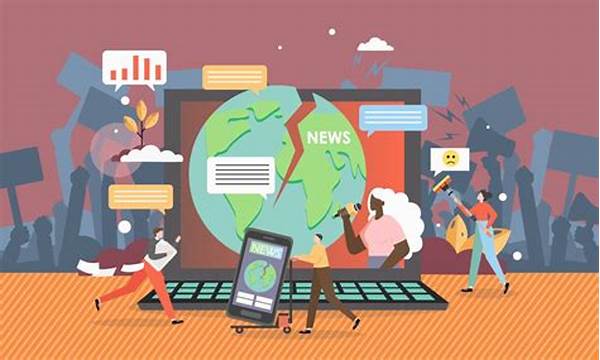The role of media in shaping public opinion and influencing policy changes is an area of considerable academic and practical interest. It is undeniable that the media serves as a crucial conduit through which information is disseminated, debated, and ultimately acted upon by both the public and policymakers. Understanding the media’s influence on public policy change demands a comprehensive examination of the mechanisms through which media narratives and coverage impact decision-making processes at various levels of governance.
The Mechanisms of Media Influence on Public Policy Change
Media influence on public policy change is multifaceted, involving several distinct but interrelated processes. First and foremost, media outlets serve as the primary source of information for the public, impacting perceptions and attitudes towards specific policy issues. Through agendas-setting, media can highlight certain topics, thereby focusing public attention and necessitating a response from policymakers. Additionally, the framing of issues within media narratives can significantly alter public understanding and policy priorities. For instance, media coverage that emphasizes the human impact of policy decisions can lead to increased public support for legislative change. Furthermore, the proliferation of digital media has democratized information dissemination, allowing a broader range of voices to contribute to the policy discourse and challenge traditional power dynamics. Consequently, the ability of media to impact policy change relies not only on its capacity to inform but also on its potential to initiate dialogue and mobilize public action.
The Role of Traditional vs Digital Media
Traditional media, such as newspapers and television, have long been instrumental in shaping public discourse and policy agendas. Their established credibility and widespread reach allow them to set the tone for national conversations, thereby affecting public policy priorities. Conversely, digital media, with its rapid dissemination and user-generated content, offers diverse perspectives and a platform for more immediate public engagement. The interaction between traditional and digital media enhances the potential for media influence on public policy change, as the two forms often complement and reinforce each other. As a result, the modern media landscape presents a dynamic environment wherein policy makers must navigate varying narratives and sentiments across multiple platforms to successfully implement policy changes.
Media as a Catalyst for Policy Discussions
Media influence on public policy change is often contingent upon its ability to act as a catalyst for policy discussions. By highlighting issues that require public attention, the media can accelerate the policy-making process and encourage public officials to respond to emerging concerns. Through investigative journalism and in-depth reporting, the media can unveil issues that might have otherwise remained under-explored, prompting inquiries and discussions among stakeholders and the public alike. In this regard, media influence is not limited to shaping policy decisions but extends to fostering an informed citizenry capable of engaging in meaningful policy debates.
Evaluating Media’s Impact on Legislative Processes
Understanding the extent of media influence on public policy change involves assessing its impact on legislative processes. Media coverage can shape legislative priorities by bringing issues to the forefront that require immediate attention. Policymakers, driven by public sentiment captured through media, might introduce bills or propose reforms in response to growing public demand. The persuasive nature of the media often necessitates that legislators remain attuned to media narratives, ensuring that policy responses align with public expectations and demands.
Criticism and Challenges of Media Influence
While media influence on public policy change is generally seen as beneficial for democratic engagement, it is not without its criticisms and challenges. There exist concerns regarding media bias, the homogenization of perspectives, and the potential for misinformation, all of which can distort public understanding and influence policy agendas adversely. Furthermore, the competitive nature of media landscapes can lead to sensationalism, where complex policy issues are oversimplified or misrepresented. It is critical for policymakers and the public to critically evaluate media content and remain aware of these potential pitfalls to safeguard informed decision-making processes.
Media Influence and Public Accountability
One of the critical roles of media influence on public policy change lies in promoting public accountability. By scrutinizing government actions and policy implementations, the media serves as a watchdog, ensuring that policymakers remain accountable to their constituents. Through ongoing coverage and analysis, the media can facilitate transparency and help uphold democratic values by keeping the public informed about the implications of policy decisions. This aspect of media influence ensures that public officials act in the best interest of society and maintain public trust.
The Future of Media Influence on Public Policy Change
The future trajectory of media influence on public policy change will largely depend on the evolving relationship between media, technology, and society. As media platforms continue to innovate and expand their reach, the potential for greater public engagement and policy impact grows. However, the challenges associated with media misinformation and bias will necessitate improved media literacy and regulatory measures to ensure that this influence remains constructive. The ability of media to adapt to technological advancements and maintain credibility will be paramount in sustaining its role as a vehicle for positive policy change.
Conclusion
In summation, media influence on public policy change is a dynamic and evolving phenomenon that significantly impacts the legislative landscape. Through agenda-setting, framing of issues, and acting as a catalyst for discussion, the media plays a crucial role in shaping public policy. The interplay between traditional and digital media further enhances this influence, offering varied avenues for public engagement and discourse. However, the potential challenges posed by media bias and misinformation cannot be overlooked, underscoring the need for critical media consumption and policy makers’ vigilance. As media continues to develop alongside technological and societal changes, its capacity to drive public policy change remains a fundamental aspect of democratic governance. In this context, understanding and harnessing media influence is essential for fostering informed and effective policy-making that reflects the public’s needs and priorities.





